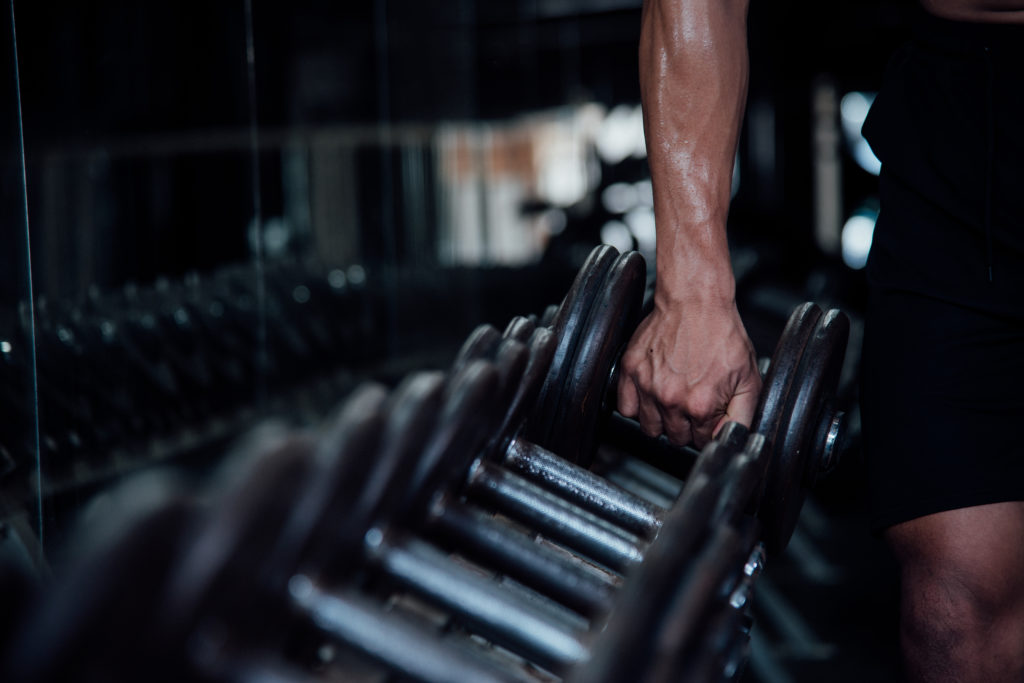
Can cardio slow down muscle growth?
Are you avoiding cardio for fear that it could slow down your muscle gain? Find out what science has to say about this!
“Cardio training kills progress” – the mantra has taken root in the world of strength training. Some bodybuilders believe in her so much that they see danger even in climbing two flights of stairs as if it could turn a 130-kg hulk into a 60-kg weakling. The mechanisms of muscle adaptation in response to aerobic and strength training are very different, it is true.
However, this does not mean that aerobic and strength training are completely incompatible.
When properly integrated into your workout, cardio can boost your performance, improve tissue composition, and promote health.

Can you give yourself a cardio trainer and continue to build muscle?
Decades ago, 10 weeks of cardio in combination with strength training was shown to slow muscle growth when compared to strength training alone. But if you look closely at the training load in that study – six days of cardio plus five days of strength training per week – you can see that it is very high. Few of us are going to do 30-40 minutes of cardio six days a week.
Further research suggests that moderate cardio exercise may even enhance the effect of strength training. Experiments have shown that strength training combined with 2-3 cardio workouts per week produces greater strength gains than strength training alone.
The conclusion suggests itself that there should be a “golden alloy” of aerobic and power load. Being overly fanatical about cardio can slow down muscle growth – but the complete absence of aerobic exercise has the same effect. 2-3 cardio workouts per week is the best option for boosting results without risking muscle mass.
Timing is important
The mechanisms of muscle adaptation in response to strength and aerobic training can compete with each other. In theory, they can even slow down a competitor. Therefore, it is very important to leave a time gap for recovery between training sessions . This will help optimize both physical performance and training results.
The decrease in strength indicators after high-intensity endurance exercises has been observed for 6 hours, so it is worth diluting the sessions for at least this time interval. On the other hand, if you wait too long, you may experience delayed soreness after a previous workout. Muscle pain is always late. Try to find a middle ground: long enough to minimize the decline in strength, but also fast enough so that delayed muscle soreness does not affect the quality of your workout.
From the point of view of priority, the difference is not very significant. Several studies have compared muscle adaptation in response to strength training after or before aerobic exercise. It turned out that the growth of strength indicators and muscle mass does not depend on the sequence of training.
But from a practical standpoint, fatigue after strength training does not affect cardio efficiency as much as fatigue after cardio affects the productivity of resistance training. Judge for yourself, which is better to be tired while doing 3RM squats, or while running 3K? I choose the second option.
However, everyone has their own preferences. Experiment with your workout sequence and timing. Look for an optimal schedule that enhances your physical performance.
Cardio type matters
Compared to other aerobic activities, running provokes the most pronounced damage to muscle fibers – apparently, this is due to a large number of eccentric muscle contractions. But when cycling, the focus shifts to concentric muscle activity. As a result, muscle damage is reduced and, consequently, the effect of carid load on recovery and muscle growth is also reduced.
Running for hours is probably not a good idea, but less expensive cardio, like riding a stationary bike, can boost your strength section. Several studies have shown that weightlifting paired with an exercise bike produces more muscle mass gains than weightlifting paired with a treadmill or strength training alone.
conclusions
Cardio is great for your overall health as it increases your aerobic endurance. But they are also useful for weightlifters. Cardio will help increase training volume during resistance sessions, accelerate recovery between sets and workouts, improve tissue composition, and protect you from shortness of breath while climbing stairs.
Timing and total aerobic and strength training are key factors in creating a successful combination training program.
How to use cardio to improve your results?
- Use strategies that increase the intensity of your cardio but decrease the total amount of exercise (for example, HIIT 2-3 times a week).
- For practical reasons, do weights first and then cardio. The reverse order can affect the quality of your strength training.
- Divide training sessions with at least 6 hours of rest to minimize interference and improve performance.
- Unlike running, cycling is more suitable for accelerating your training progress.

How to integrate cardio into your strength training program?
Example Workout Plan 1
- Monday before lunch: lower body
- Monday afternoon: exercise bike, 8-10 sets of 1 minute “at the limit” with 1 minute of “rest” in between. Start with a 5 minute warm-up and end with a 5 minute stretch at low revs. (Stretches “at the limit” should be as intense as possible so that you do not have enough air for the last 10-15 seconds of the interval.)
- Tuesday: Upper Body Press
- Wednesday: rest
- Thursday before lunch: lower body
- Thursday afternoon: 10 km timed stationary bike (walk 10 km as fast as you can; try to improve every week).
- Friday: Upper Body Rows
Sample Workout Plan 2
- Monday: Upper Body Press
- Tuesday: Upper Body Rows
- Wednesday before lunch: lower body
- Wednesday afternoon: 30 minutes on a stationary bike. Pace Ride (aim for the highest intensity you can maintain for the entire 30 minutes).
- Thursday: rest
- Friday: upper body presses
- Saturday: Upper Body Rows
- Sunday: lower body
- Sunday: 6-8 sets of rowing machine. Cover 400 meters as quickly as possible, then recover 200 meters. (Start with a 5-minute warm-up and end with a 5-minute low-speed stretch.)
